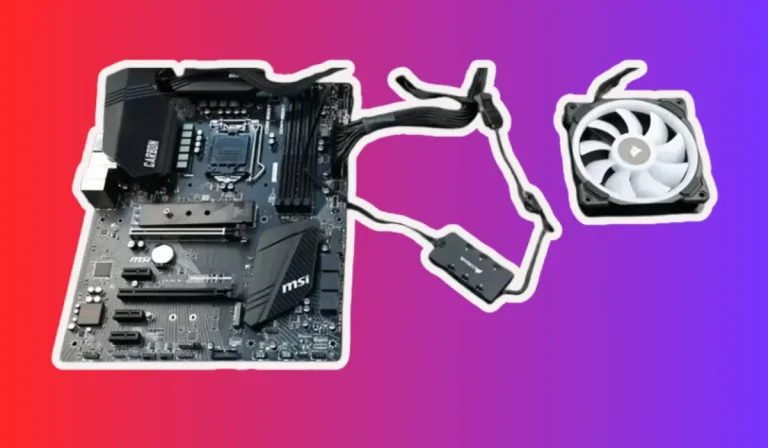How Do I Enable Onboard Graphics In BIOS Asus?
Are you wondering how to enable onboard graphics in your Asus BIOS? Look no further! In this easy-to-follow guide, we’ll walk you through the process step-by-step.
Whether you’re a gaming enthusiast or just looking to enhance your computer’s performance, enabling onboard graphics can make a big difference. Let’s dive in and get started!
Checking Current Graphics Configuration
Before proceeding to enable onboard graphics in your Asus BIOS, it’s important to check your current graphics configuration. This will help you understand the existing setup and ensure a smooth transition. Here, we will dive in and see how you can check the current graphics configuration on your Asus motherboard.
Step 1: Accessing the BIOS Settings
- Start by restarting your computer.
- As the computer boots up, press the designated key to access the BIOS settings. This key varies depending on your motherboard model, but commonly used keys are F2, Delete, or F12. Refer to your motherboard’s manual or look for on-screen prompts to identify the correct key.
Step 2: Navigating to the Graphics Configuration
- Once you’re in the BIOS settings, use the arrow keys on your keyboard to navigate to the “Advanced” or “Advanced Settings” section.
- Look for a category related to graphics, such as “Integrated Graphics Configuration” or “Video Configuration”. Use the arrow keys to select it and press Enter.
Step 3: Checking the Graphics Configuration
- In the graphics configuration section, you’ll find information about your current graphics setup.
- Look for options like “Primary Display Adapter” or “Graphics Mode”. Here, you’ll see whether the onboard graphics or a dedicated graphics card is currently set as the primary display adapter.
- Take note of this information, as it will help you understand the initial setup before enabling onboard graphics.
Enabling Onboard Graphics in BIOS
If you’re looking to unleash the power of onboard graphics on your Asus motherboard, you’ve come to the right place! Enabling onboard graphics in the BIOS can enhance your computer’s performance, especially for tasks like video editing, casual gaming, or even everyday computing. We will dive in and discover how you can enable onboard graphics in the BIOS.
Step 1: Accessing the BIOS Settings
- Restart your computer and press the designated key (commonly F2, Delete, or F12) to access the BIOS settings.
- Once you’re in the BIOS interface, use the arrow keys to navigate and locate the “Advanced” or “Advanced Settings” section.
Step 2: Locating the Graphics Settings
- Within the “Advanced” section, search for a category related to graphics, such as “Integrated Graphics Configuration” or “Video Configuration”.
- Select the appropriate category using the arrow keys and press Enter to enter the graphics settings.
Step 3: Enabling Onboard Graphics
- Look for an option like “Primary Display Adapter” or “Graphics Mode”. This setting determines the primary graphics device.
- Select the option and change it to “Onboard” or “Integrated Graphics” to enable the onboard graphics.
- Save the changes and exit the BIOS settings. Your computer will restart, and the onboard graphics will be activated.
Troubleshooting and Common Issues
While enabling onboard graphics in the BIOS of your Asus motherboard is a straightforward process, you may encounter some common issues along the way. Don’t worry! Here, we’ll explore troubleshooting tips for resolving these issues and ensuring a smooth experience with your onboard graphics.
1. No Display After Enabling Onboard Graphics
- If you’re faced with a blank screen or no display after enabling onboard graphics, it’s possible that the BIOS settings are conflicting with your hardware.
- To resolve this, restart your computer and enter the BIOS settings again.
- Look for an option called “Initiate Graphic Adapter” or similar, and change it to “Onboard” to prioritize the onboard graphics.
- Save the changes and restart your computer to see if the display is restored.
2. Incompatibility with Dedicated Graphics Card
- Some motherboards may have compatibility issues between onboard graphics and dedicated graphics cards.
- If you have a dedicated graphics card installed and want to use onboard graphics, ensure that the dedicated card is disabled in the BIOS settings.
- Look for an option called “Primary Display Adapter” or “Graphics Mode” and select “Onboard” to disable the dedicated graphics card.
- Save the changes, restart your computer, and check if the onboard graphics are functioning as expected.
3. Outdated BIOS Version
- An outdated BIOS version can sometimes cause issues with enabling onboard graphics.
- Visit the Asus support website and check for any available BIOS updates for your motherboard model.
- Download the latest BIOS version and follow the instructions provided by Asus to update your BIOS.
- After the update, revisit the BIOS settings and ensure that the onboard graphics are enabled.
FAQ’s
1. How do I access the BIOS settings on my Asus motherboard?
Restart your computer and press the designated key (commonly F2, Delete, or F12) to access the BIOS settings.
2. Where can I find the graphics settings in the BIOS on my Asus motherboard?
Look for a category related to graphics, such as “Integrated Graphics Configuration” or “Video Configuration”, usually located in the “Advanced” section of the BIOS.
3. What should I do if I have no display after enabling onboard graphics in the BIOS?
Restart your computer, enter the BIOS settings again, and change the “Initiate Graphic Adapter” or similar option to “Onboard” to prioritize the onboard graphics.
4. Can I use onboard graphics and a dedicated graphics card simultaneously on my Asus motherboard?
It depends on the specific motherboard model. In most cases, you need to disable the dedicated graphics card in the BIOS settings to use onboard graphics.
5. How can I update the BIOS on my Asus motherboard to ensure compatibility with onboard graphics?
Visit the Asus support website, download the latest BIOS version for your motherboard model, and follow the provided instructions to update the BIOS. After the update, revisit the BIOS settings to enable onboard graphics if necessary.
Conclusion
Enabling onboard graphics in the BIOS of your Asus motherboard is a straightforward process that can enhance your computer’s performance.
By accessing the BIOS settings, locating the graphics options, and making the necessary changes, you can unlock the power of onboard graphics. Enjoy the improved capabilities and versatility it brings to your computing experience. Happy enabling!


